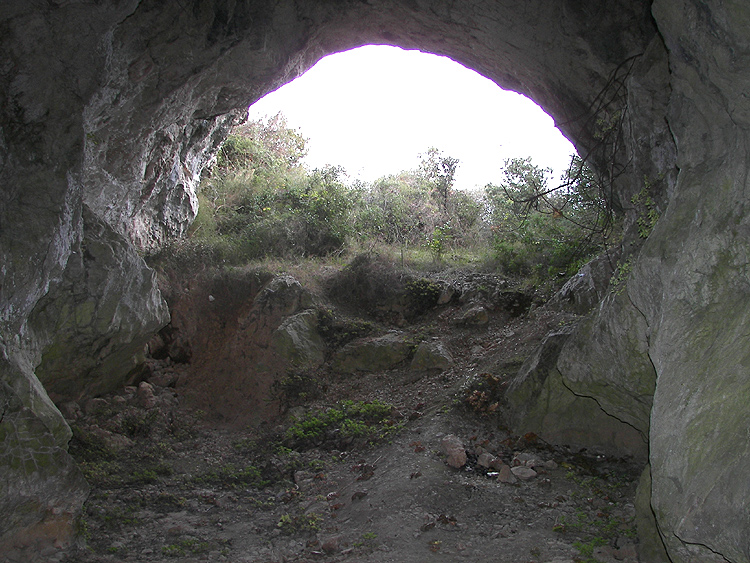Most of the inhabitants of this, my own village of Moux know the cave as La Caune, or la Grotte. The older ones would have known the slopes of Mont d’Alaric and Le Roc Gris from childhood like the back of their hand – where to find mushrooms and wild garlic and wild asparagus, and where the graves and caves were. And it might have been them that scavenged odd items of interest in the cave by the ruined Lime-Kiln House.
Then, when young Regis Aymé began reporting his finds in the 1960’s and the archaeologists arrived, a more serious scavenger appeared on the scene with metal-detector and money in mind. So it is not surprising that up until 1984, la grotte de la Caouno had only produced one example of prehistoric pottery – although the fact that it was an almost complete campaniform vase, decorated with combed markings was pretty remarkable. (J. Guilaine – La civilisation du vase campaniforme dans les Pyrénées françaises – Gabelle 1967).
Then in 1987/86 a rescue excavation, led by Henri Duday, discovered beneath the cave the villagers knew so well, a second cave containing the skeletal remains of about a hundred individuals, establishing this as an important collective grave. To the researchers, the site of la Caouno also represented a significant discovery in the area of paleopathology : a trepanned skull [the patient of which survived the operation] and a case of tuberculosis of the bones constituted exceptional discoveries.
In the access-tunnel part of cave N° 2, biconic urns and a bronze spiral bracelet were found, initially thought to date from the middle Bronze age (1500 BC). This dating was not able to be confirmed – on the contrary, the discovery of two arrow-heads with swept-back flights and a small bowl with campaniform decoration, classify the other items of cave II as originating in the Chalcolithic era [ 2500/2000 BC ] of the late Neolithic. My trans. (Henri Duday: La Caouno de Moux. Rapports de fouilles – 1984/85/86 Bulletin S.E.S.A.).

The access tunnel, hidden from curious children and chercheurs clandestins alike beneath the cave floor, was sealed with a concrete slab in ’86. And nothing further has taken place – in what must be one of the more remarkable sépultures collectives and on one of the region’s most distinctive mountains.






Félicitations pour votre vaste travail et les excellentes ^hotos.
Pourriez-vous me faire connaître votre nom ?
Avec tous mes remerciements.
Membre de la SFO (j’ai omis de le dire en mon précédent message)
bonjour ….en 1983 j’ai visité une grotte de ce secteur(j’en ai oublié précisement le lieu- j’avais découvert dans le soldes os humains , différent crane dont un crane tépané ( avec survie )
j’ai signalé la decouverte a M Capdeville -spéléologue(ai des photos de ces trouvailles_